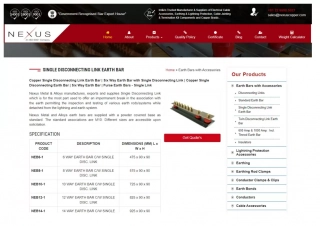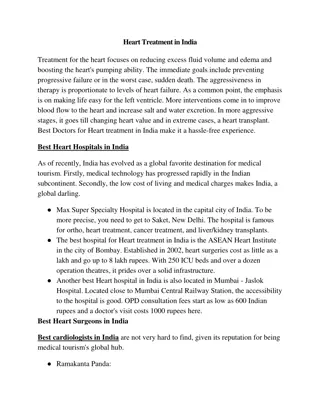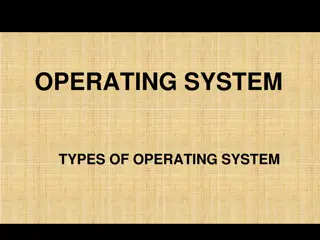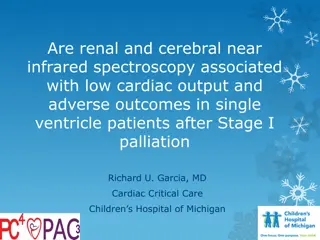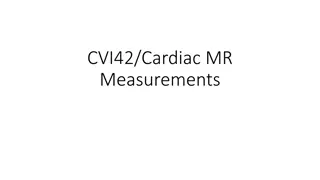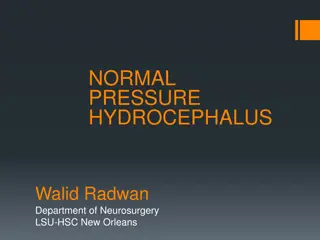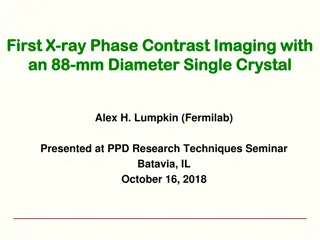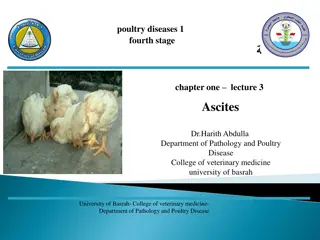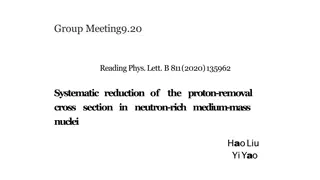
Case Conference: Single Ventricle Management
Explore the case presentation of a 2-day-old infant with hypoplastic left heart syndrome including preoperative, surgical, and postoperative management. Learn about the complex cardiac anatomy and initial clinical findings upon arrival at the PCICU.
Download Presentation

Please find below an Image/Link to download the presentation.
The content on the website is provided AS IS for your information and personal use only. It may not be sold, licensed, or shared on other websites without obtaining consent from the author. If you encounter any issues during the download, it is possible that the publisher has removed the file from their server.
You are allowed to download the files provided on this website for personal or commercial use, subject to the condition that they are used lawfully. All files are the property of their respective owners.
The content on the website is provided AS IS for your information and personal use only. It may not be sold, licensed, or shared on other websites without obtaining consent from the author.
E N D
Presentation Transcript
CASE CONFERENCE: SINGLE VENTRICLE Amy Joseph PGY-4, PCCM February 28, 2023
Outline Case Presentation Hypoplastic Left Heart Syndrome- What is it? Preoperative HLHS Management Surgical Management Postoperative Management
Case Presentation 2 day old female infant born at 37w2d via C-section and transferred from Akron Children's Admitted to the PCICU due to hypoplastic left heart syndrome and increasing lactate Fetal echo concerning for hypoplastic left heart syndrome Pregnancy uncomplicated APGARS 8 and 9 Birth weight 3.12 kg
Prior to Arrival Pre-ductal SpO2 93% and Post-ductal SpO2 92% on room air Vitals: HR 140/min| BP 72/40 mm Hg (MAP 42)|RR 39/min|Temp 36.3 C UAC, UVC, and LLE PICC placed Started on IV alprostadil 0.02 mcg/kg/min and caffeine Echo on DOL 1 showed severely hypoplastic left ventricle with mitral and aortic atresia, concern for mildly restrictive atrial communication, also had a levo-atrial cardinal vein from LA to inominate vein Renal and head US normal
On Arrival- Day of Life 2 Vitals: Temp 36.6 C|HR 163/min| BP 75/49 (57) mm Hg (RUE) 75/45 (54) mm Hg (RLE) |RR 40/min| SpO2 98% (R wrist) 96% (R Foot) On exam, well perfused, in no distress, cardiac exam with normal S1S2 and no murmur, strong peripheral pulses Rest of exam with no concerns Arrived on IV prostaglandin 0.02 mcg/kg/min and maintenance caffeine dosing Kept NPO on D10 fluids
Echo Hypoplastic left heart syndrome (mitral atresia, aortic atresia). There is severe ascending aortic hypoplasia (Z score 4.63), mild transverse aortic arch hypoplasia (Z score 2.44), and aortic coarctation. There is retrograde systolic blood flow in the aortic isthmus and aortic arch which is supplied by the PDA. Left aortic arch with normal branching. Large patent ductus arteriosus with bidirectional shunting. There is posterior malalignment of the atrial septum with a moderate-sized patent foramen ovale with left to right unrestrictive shunting (mean gradient 3.5 mmHg). Moderately dilated right ventricle with normal wall thickness and normal systolic function. Trivial tricuspid regurgitation. Moderately dilated main pulmonary artery. (Z score 3.96) The coronary artery anatomy appears to be normal. There is a small (2-3 mm) levoatrial cardinal vein connecting between the left atrium and the left brachiocephalic vein with flow from left atrium to systemic vein (mean gradient 1.5 mmHg). There is no pericardial effusion.
Hypoplastic Left Heart Syndrome A spectrum of congenital cardiac malformations with varying degrees of underdevelopment of the left-sided heart structures Mitral valve and aortic valve atresia or stenosis Hypoplasia or absence of left ventricle Hypoplasia of the ascending aorta and aortic arch Estimated to occur in 2.3 per 10,000 live births in the US each year ~10.9% of mortalities from congenital heart disease Risk factors for HLHS Predominantly in males Periconceptional opioid use or fever Genetic syndromes: Turner syndrome, trisomy 13, trisomy 18, Holt-Oram, Smith-Lemli-Opit, Jacobsen Syndrome
HLHS Presentation Shock related to closure of the ductus arteriosus Imbalance in Qp:Qs leading to congestive heart failure As PVR decreases over the first few weeks, this leads to increased pulmonary blood flow from RV To maintain systemic perfusion, cardiac output has to increase, which can eventually result in cardiac failure The degree of interatrial communication determines amount of pulmonary blood flow Imbalance in Qp:Qs leading to hypoxemia More restricted interatrial communication leads to hypoxemia
HLHS Presentation Balanced Qp:Qs Adequate systemic perfusion Qp:Qs > 1:1 Unrestricted interatrial communication Requires total Q to be adequate to maintain systemic perfusion Qp:Qs <1:1 Little or no interatrial communication, therefore inadequate pulmonary blood flow
If SpO2 80% Ao SVC = 80-60 PV-PA If SpO2 95% Ao SVC = 95-75 PV-PA If SpO2 60% Ao SVC = 60-40 PV-PA = 20 Qp:Qs =1:1 20 100-80 = 20 Qp:Qs =4:1 5 100-95 = 20 Qp:Qs =1:2 40 100-60
Shone's Complex Supravalvar mitral ring Parachute mitral valve Subaortic stenosis Coarctation of aorta
Day 2-7 Remained on prostaglandins at 0.02 mcg/kg/min Started on 1 L 21% nasal cannula due to tachypnea, SpO2 predominately >95% Head and renal ultrasounds were normal Pre-op EEG normal Kept NPO and on TPN Planned for a Norwood procedure with Sano shunt on DOL 7
Preoperative Management Keep the duct open Important to start prostaglandin E1infusion If presenting in shock-> start with 0.05-0.1 mcg/kg/min and then decrease to effective dose of 0.01-0.02 mcg/kg/min Maintain Qp:Qs at 1:1 If Qp:Qs >1:1 with systemic hypoperfusion Maneuvers to increase cardiac output Increase total intravascular volume Contractility: Low dose epinephrine infusion calcium infusion Decrease SVR Increase oxygen delivery: maintain Hb 13-16 mg/dL Increase pulmonary vascular resistance Positive pressure ventilation to increase lung volumes-> compress pulmonary vessels Positive pressure also decreases afterload Can decrease myocardial demand with sedation
If Qp:Qs<1:1 Create unrestrictive interatrial communication (cardiac catheterization) Decrease PVR- should give supplemental oxygen Decrease metabolic demand Increase RV pressure- ensure adequate intravascular volume and inotropic agents Increase SVR
Surgery Norwood Procedure with a 5 mm Sano shunt Double lumen Broviac also placed Aortic arch reconstructed with pulmonary homograft patch, DKS performed, PDA ligated and divided, chest left open Bypass time 149 minutes Cross clamp time 72 min EBL 50 ml Temporary atrial and ventricular pacing wires placed Peak lactate 9.3 2 chest tubes placed and a peritoneal drain Had an episode of SVT upon dissection of aorta and required cardioversion and developed a junctional rhythm at end of case which resolved without intervention Post-op TEE: Good function, RV mildly dilated and hypertrophied, unrestrictive ASD, unobstructed aortic arch, patent Sano shunt
Arrival to the PCICU Arrived to PCICU intubated on Morphine and precedex infusions Epinephrine 0.03 mcg/kg/min Milrinone 0.55 mcg/kg/min Nitroprusside 1 mcg/kg/min Calcium 20 mg/kg/hr Vitals: HR 135/min|BP 65/30 mm Hg (MAP 44)| SpO2 83% on 25% FiO2 | RR 34/min |CVP 8
Norwood Procedure Basic Principles Unobstructed RV to aorta connection for systemic perfusion Replacement of PDA with restrictive RV to PA or aortopumonary conduit Removal of any obstruction of interatrial connection or pulmonary venous inflow tract Typically performed during first few weeks of life
Immediate PCICU Management Optimize systemic cardiac perfusion Decrease metabolic demands Maintain normothermia Sedation Increase oxygen delivery Low dose inotrope infusions epinephrine Calcium infusion Decrease SVR Milrinone infusion Nitroprusside, nicardipine Intravascular volume status Need to avoid volume overload Lasix infusion PD catheter
Post-operative Course Continued with low dose epinephrine, milrinone and bumex infusions Tolerated chest closure and removal of PD on post-operative day 3 Extubated to HFNC on post-operative day 4 Started on enteral feeds and transitioned to intermittent lasix and enalapril
Post-Operative Concerns Hypoxemia Pulmonary venous desaturation Decreased Qp:Qs Shunt occlusion Elevated PVR Systemic venous desaturation Decreased oxygen delivery Shock
Post-Operative Concerns Myocardial Dysfunction Arrhythmias Excessive pulmonary blood flow CNS issues Seizures Stroke

